**
100 year old WWII Navy veteran, Charles Wiggins, visits Steelers practice.
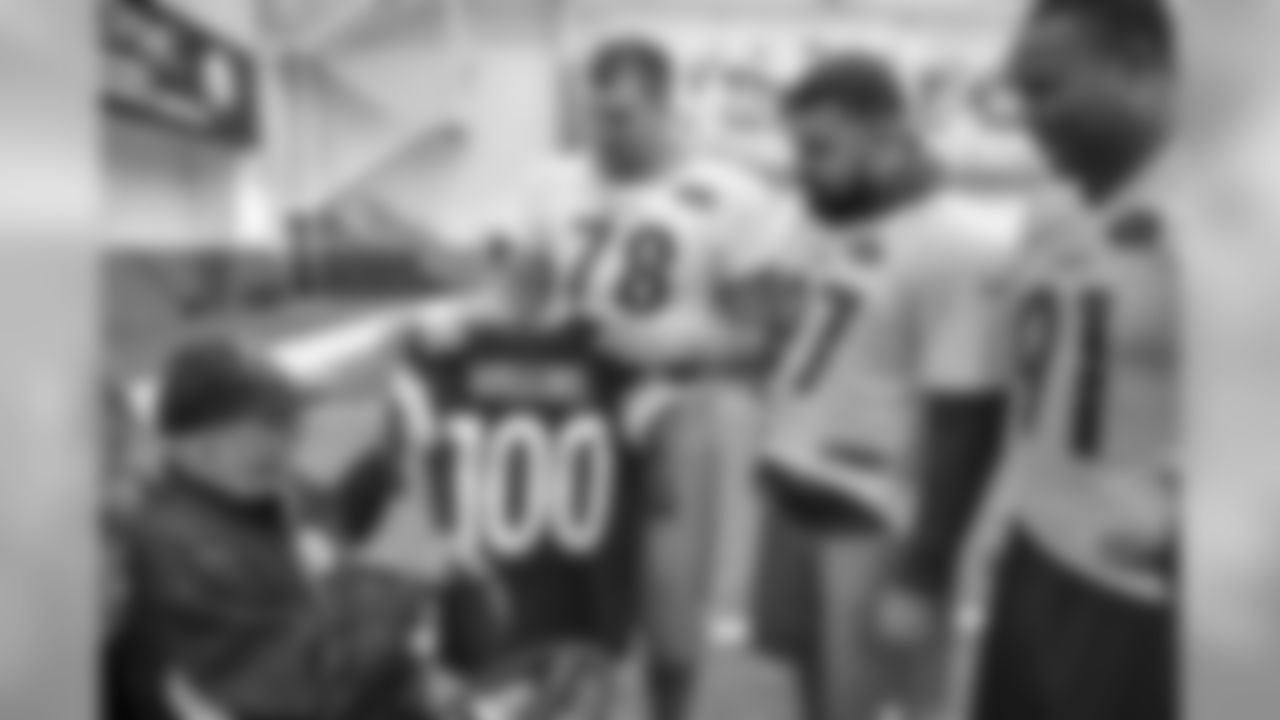


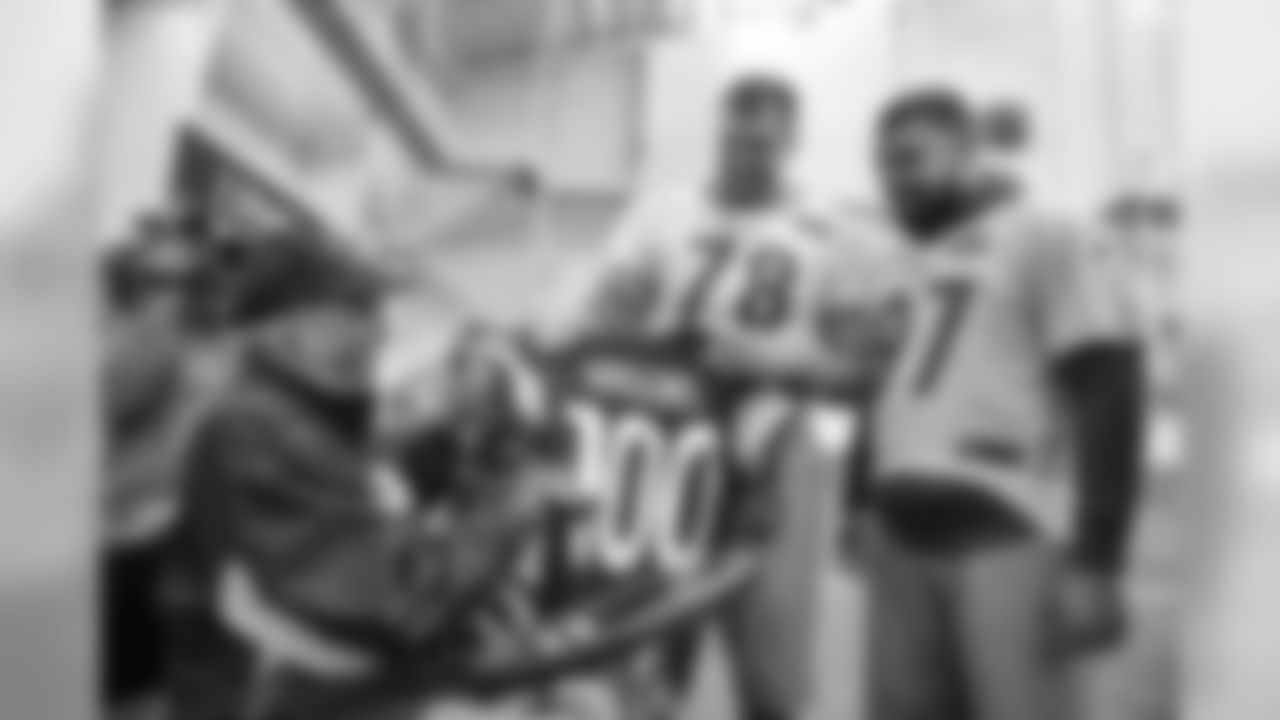

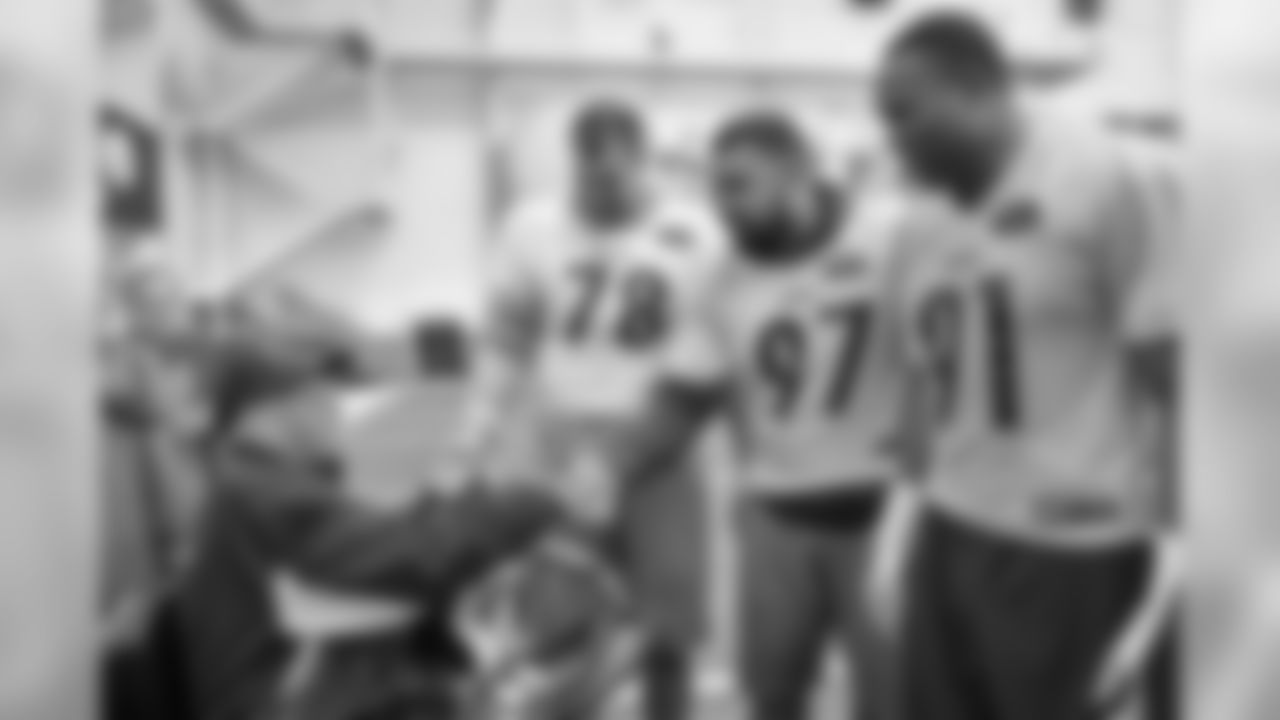
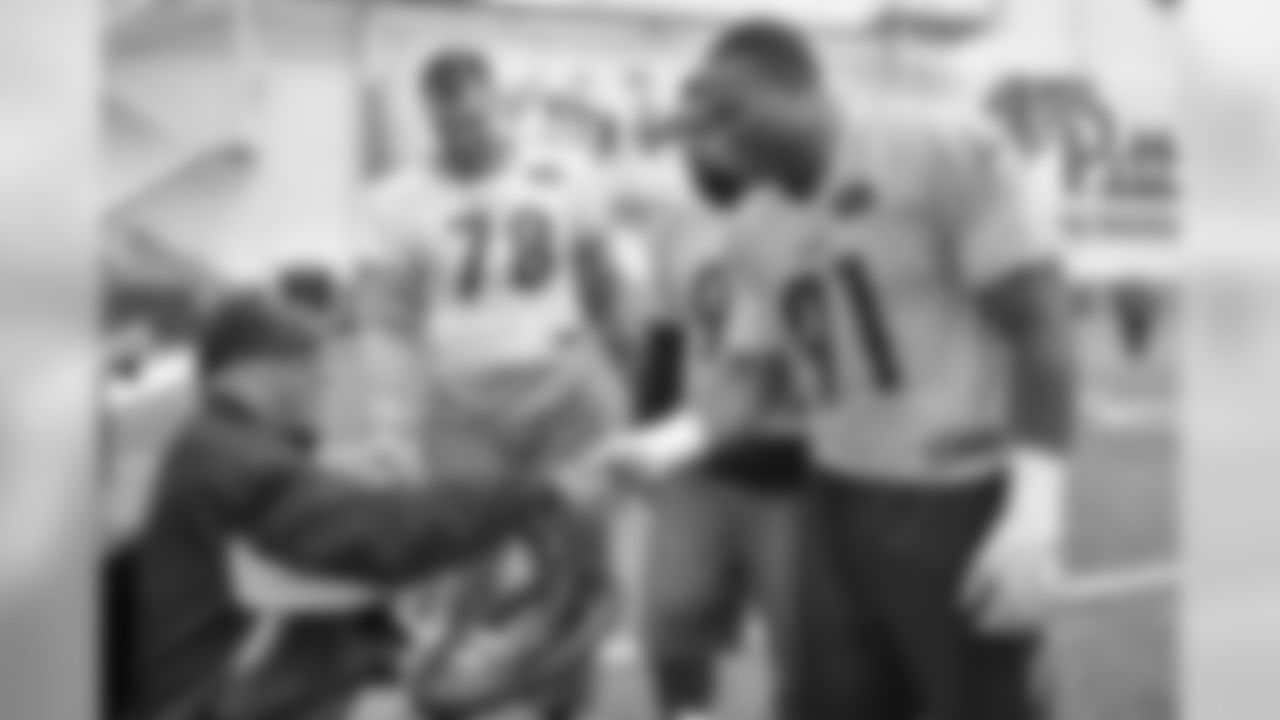





Q. Based on the rules as they are today, are there any protections in place for the quarterback on a quarterback sneak?**
A. There really aren't. If you cut through it with a fine-tooth comb, I'm sure there's some language there that you can interpret in such a way. But it's a close-quarters football play. It's a situational football play. I think everybody in the game, everybody surrounding the game, understands the risks associated with it and the risks associated with utilizing it.
Q. When you say close-quarters, do you mean it would be a quicker whistle from the officials, a quicker un-piling of the bodies?
A. You won't see anything in the language of the rules relative to that, but there are nuances of the game, understandings within the game in terms of how the game is administered.
Q. It's assumed by fans that the execution of a quarterback sneak is a simple matter. It is in fact simple, and what are the execution requirements for it to be successful?
A. There are a lot of complexities to it. I think just on the surface, you have to find the soft spot (in the defensive front) and the soft spot moves based on the front. The way the defensive linemen are employed has a lot to do with it, and the more the defensive linemen pack into the center or the core, the more difficult it is because your soft spot is more lateral. Often you think about images of quarterbacks taking sneaks and you see that lateral step, and then they get vertical. Well, that's what they're doing – they're searching for that soft spot in the front where they can get the necessary push to get across the line to gain.
Q. Is it a visual search the quarterback is doing (for the soft spot), or is it all based on the blocking call and the defensive front?
A. It's a purely visual thing. The blocking schematics are virtually the same regardless of what you see – it's a wedge-like concept offensively. It's up to the quarterback to visually find the soft spot and make that element of it happen.
Q. A few weeks ago, Todd Haley said in an interview that the reason the Steelers don't use Ben Roethlisberger on quarterback sneaks is because it was a general staff decision "not to let people earhole the quarterback in the side of the head." Is that accurate?
A. Yes. And also we have guys who are compensated, and compensated well, to run the football. And we're going to let those guys do it – guys like Le'Veon Bell and James Conner.
Q. Staying with short-yardage/goal-line situations for the offense, since players are coached not to use their head, does that make it more difficult for offensive linemen to come off the ball in those kinds of situations and move the defensive players off the line to create space for the ball carrier?
A. Not at all. The coaching point, or the emphasis, is about pad level. And really it always has been about pad level. There are axioms relative to the game in those circumstances that hold true. Low hat and inside hands win. Your helmet and head is attached to your shoulders and so forth, so there is helmet contact in those close-quarter combat things, but the verbiage the coaches use – and to my knowledge coaches always have focused on using, at least as long as I've been in the profession – is pad level and hand placement.
**
Q. It always seems that in short-yardage situations, both teams put their big people into the game and pack the formation in tight. Is that the best way to go about succeeding in that situation?**
A. You always, regardless of circumstances, try to make defenses defend the field vertically and horizontally. If there is grass to be defended, they have to be responsible for it, and if you're not thinking in that vein then you're probably off the mark. It doesn't mean you're not going to run the ball downhill on the interior portion of an offensive formation in a third-and-half-a-yard situation, but you'll sense from us that we're thoughtfully non-rhythmic in such instances and globally speaking we're going to ensure that people are prepared to defend the field, both vertically and horizontally, in all circumstances.
Q. I saw a stat last week that had the Steelers as the team with the fifth-lowest blitz percentage in the league, and you're on pace for 52 sacks this season. Is that a good combination?
A. Yes it is from our perspective, but you also have to ask yourself how people define blitz. Some people define blitz in different ways, and so the studies can be misleading. Blitz can be defined as rushing more than five people. Sometimes blitzes are defined by who comes, linebacker people or secondary people. We try to do a thoughtful job of coordinating how we come, and often we have blitzes that might not be categorized as blitzes based on who is doing the research.
Q. On offense, you seek balance in terms of runs and passes, but on defense do you also seek balance in terms of blitzes and four-man rushes?
A. It is that same balance, and you have to be able to do all things well, because sometimes you're going to be in a circumstance where you have to lean on some aspect of it more than others. That's why we take that approach offensively. We step into a stadium on some weeks and people are committed to minimizing the run, and so we don't mind throwing the ball up and down the field on them. The same thing on the other side of it. If defensively they want to play seven-on-seven football, we don't mind pounding them out with the run. Same thing on the defensive side in terms of who we employ to put pressure on the quarterback. We have to bring four, we have to bring five, we have to bring three, we have to play man, we have to play zone, we have to play bogus man, we have to play bogus zones. We strive for balance so we can do all of those things to an acceptable level, because in certain instances, whether we want to or not, we're going to have to lean on all elements of that package to get us out of stadiums.
Q. Generally speaking based on what you see from opponents as you're studying video during the normal preparation process, do NFL defenses nowadays utilize zone coverage more often or man-to-man?
A. I think they fall into one or the other, and I think it's 50:50. If you really want to put it layman's terms, all you have to ask yourself is: where do they spend their money? If they spend their money on the secondary, they're probably a man-coverage team. If they spend their money up front, they're probably a zone-coverage team. It's as simple as that. And the really great defenses have high-priced players at both spots – think Von Miller and Aqib Talib in Denver.
**
The Steelers grant the wish of a young Steelers fan from Monaca, PA.


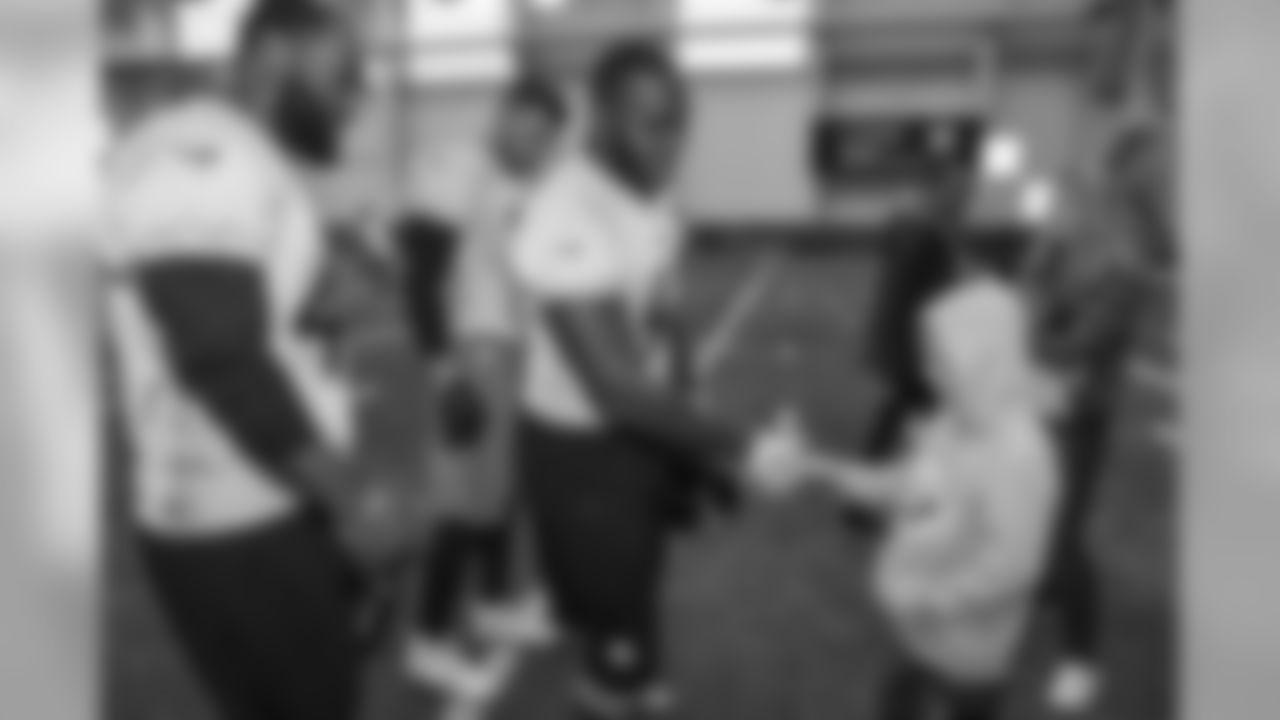












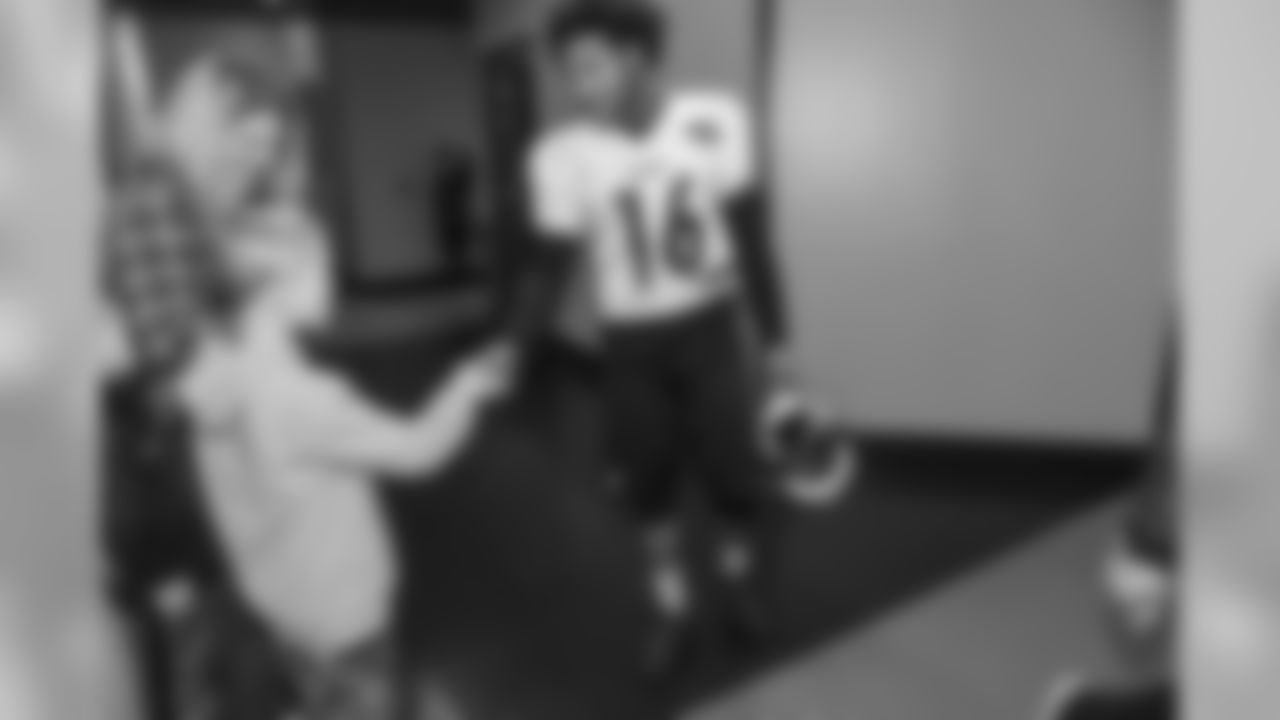
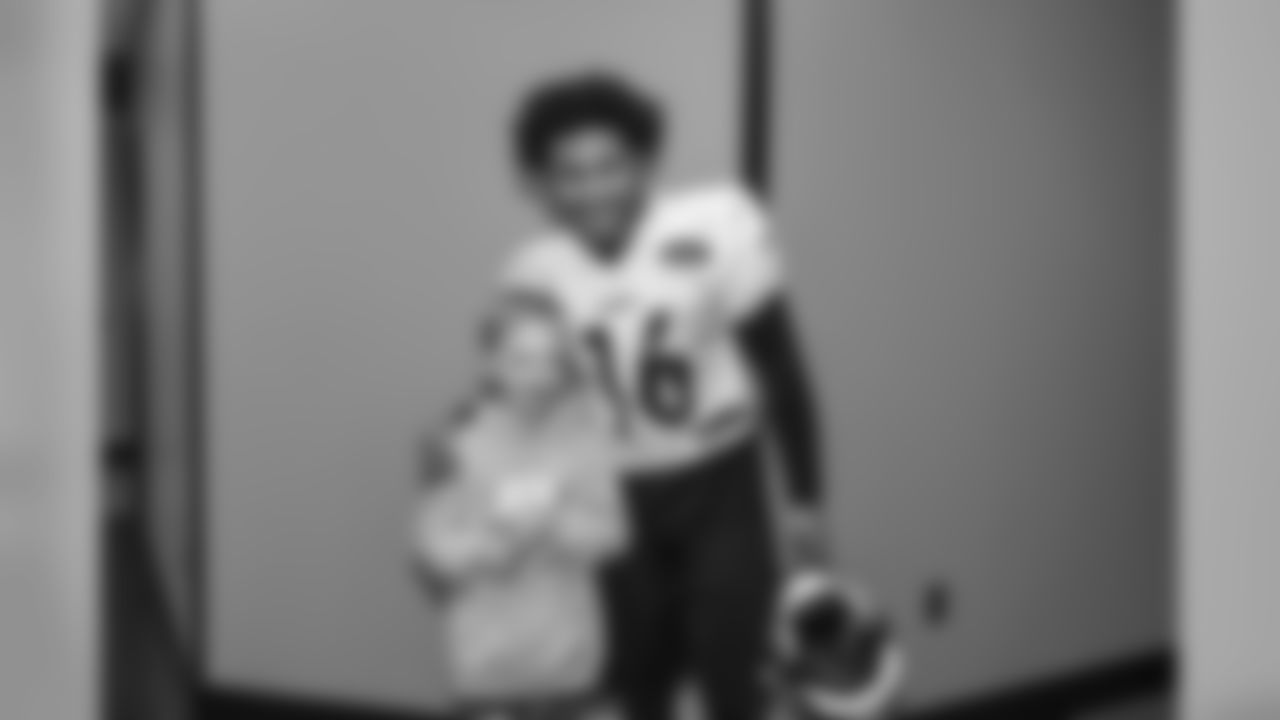








Q. What are the components necessary for a defense to be able to play man-to-man? What do you need from the pass rush? What do you need from the linebackers?**
A. You need the pass rush to be able to contain and constrict the pocket. There are dire consequences when the quarterback gets out of the pocket when you're in man-to-man, much more so than zone. In zone there is always a help element to it. The quarterback breaks contain and the play gets extended, in zone you can fan the field and you still have a chance to get people covered up. If you're playing man-principles, if that ball doesn't come out on time, there are dire consequences for that.
With the linebackers, in man-to-man, their responsibilities are no different than the front or the coverage, depending on how you're employing them. If you're asking them to rush, then they have the same responsibilities as the defensive linemen. If you're asking them to cover, they have the same responsibilities as the secondary people. So there really is no different set of circumstances for the linebackers.
Q. In man-to-man, is it a situation where certain defensive position players cover certain offensive position players, or can you mix-and-match?
A. It's always matchup related, ideally. Certain people cause certain problems. That's why in certain weeks, you'll hear people asking how you're going to cover certain tight ends. Because those unique tight ends, those vertical-threat tight ends, those big basketball players, if you will, they're often too athletic to be covered by linebackers and too big to be covered by safeties. That requires some discussion, some smoke-and-mirrors at times. It's very much a matchup game.
Q. Is it a matchup game for the safeties?
A. Very much so.
Q. Does each safety match up on someone, or is there a chance for a guy to play centerfield?
A. There is always flexibility, and there are different ways you can do it. It's really fielder's choice in that regard. More than anything, you try to work to the skill-set of your players. The matchups in terms of their skills relative to the other players' skills. Who you choose to free up could be defined by their ability to QB-key and cover distances and so forth. There are a lot of variables in it, but you have a lot of opportunities to change, not only week-to-week but in-game.
Q. Is it possible to play one coverage all the time, week in and week out, and be successful these days?
A. Those days are over. (Laughs) Those days of Jack Ham defending the slot are over. People work too hard and too long and there's too much technology. The volume of film and your access to it, and your ability to prepare based on that access has changed the game from that perspective over the years.
Q. How many (coverages) do you need in your repertoire to get through a game when it's a playoff-caliber opponent?
A. You never really know until you're there, but you better have enough. And that's different from circumstance to circumstance. It's based on the quarterback. It's based on the volume of offense your opponent has. It's based on a lot of things.














